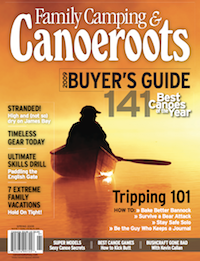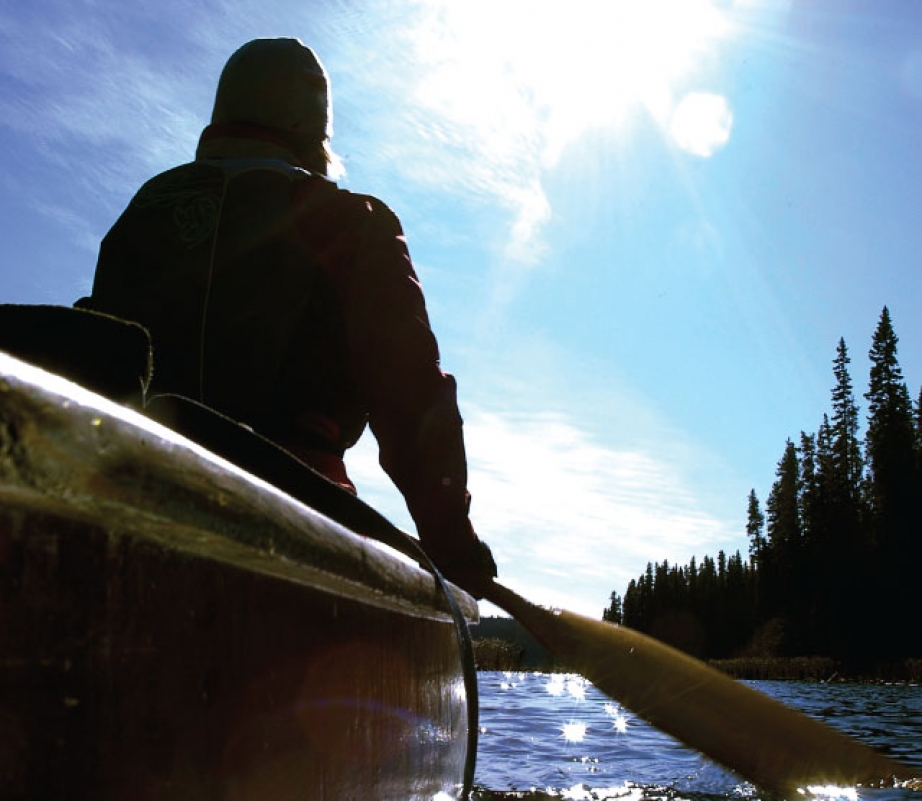Three weeks of battling the cold, rain and snow were starting to pay off as I worked my way west and north of Temagami. I was on a five-month solo canoe trip and it had been an unusually cold and wet spring. After multiple slips and falls and one runaway canoe, I was beginning to feel good. The days were getting longer, my muscles stronger and my confidence greater.
My topo map told me I had one more portage before the next campsite. I rolled my canoe onto my shoulders and hit the trail. That’s when everything changed. I tripped on a root and fell. When I tried to stand I knew my trip was over. Three anguished hours later I grabbed my satellite phone and made the call. After all I’d been through, an innocent stumble had left me with a badly torn groin muscle and no way to go on.
Considering where I was and that I was alone, I was lucky. If I hadn’t been carrying a satellite phone you might not be reading this. Solo trippers don’t have partners to lean on when things go wrong. To trip alone you need to be prepared and attentive to every detail, because the consequences of mistakes or accidents are totally different from group tripping. Here are some tips on staying safe when alone in the bush.
Ditch kit
A ditch kit is a fanny pack of essential safety gear that you should wear at all times. It contains everything you need to survive for a few days should you become separated from the rest of your gear. Include items like matches, emergency blanket, candles, compass, bug repellent, fishing hooks and line, pen flare, bear bangers, knife and a personal locator beacon. Pack it, and wear it.
Tether your canoe
Why do you need to wear your ditch kit all the time? In case you forget to tether your canoe to shore anytime you step out of it (even if it is up on shore and overturned). If your loaded canoe takes an end run on a river with steady current or blows away from an island campsite when the water is cold you can quickly become a modern day Robinson Crusoe.
Bear spray and bangers
The chances of encountering a problem bear in the backcountry are minimal, but without a group to help intimi- date the bear, you’ll be glad for some backup.
Leave a float plan
Before setting out, fill out and distribute a detailed float plan or itinerary. It should include your route, when you expect to be back and the colour of your canoe and tent. If you don’t return on time, authorities will have a good idea of who they’re looking for and where to find you. Leave copies with family members, local authorities (police, park office), air base operators and in your car.
Know when to walk
With nobody coming to rescue you or your gear if you dump you should evaluate rapids conservatively. It shouldn’t be too hard to check your ego and hit the trail. After all, no one’s watching.
Satellite phone or personal locator beacon
You might find these devices intrusive, but they could be your only ticket home if you become immobile when alone.
Don’t forget to eat
As simple as it sounds, it’s important to stay well-nourished to stay strong and in a good frame of mind. If you are packing for your first solo trip you may not appreciate the extra fuel your body will require. Group trippers share the workload, but when you’re alone you’re battling headwinds yourself, carrying all the gear, doing all the cooking, all the cleaning and all the packing. Plan on eating 25 per cent more food than usual, more if travelling early or late in the year.
Heebie jeebies be gone
Waking up with your heart pounding each time a mouse slowly circles your tent is no way to stay well rested. Steel yourself for the amplifying effects of solitude by paying attention to nocturnal sounds when camping with the security of a tent-mate. Be mindful of how many noises there are at night, so you won’t be too surprised by your heightened perception when you are, you hope, the only human for miles.

This article first appeared in the Spring 2009 issue of Canoeroots Magazine.




